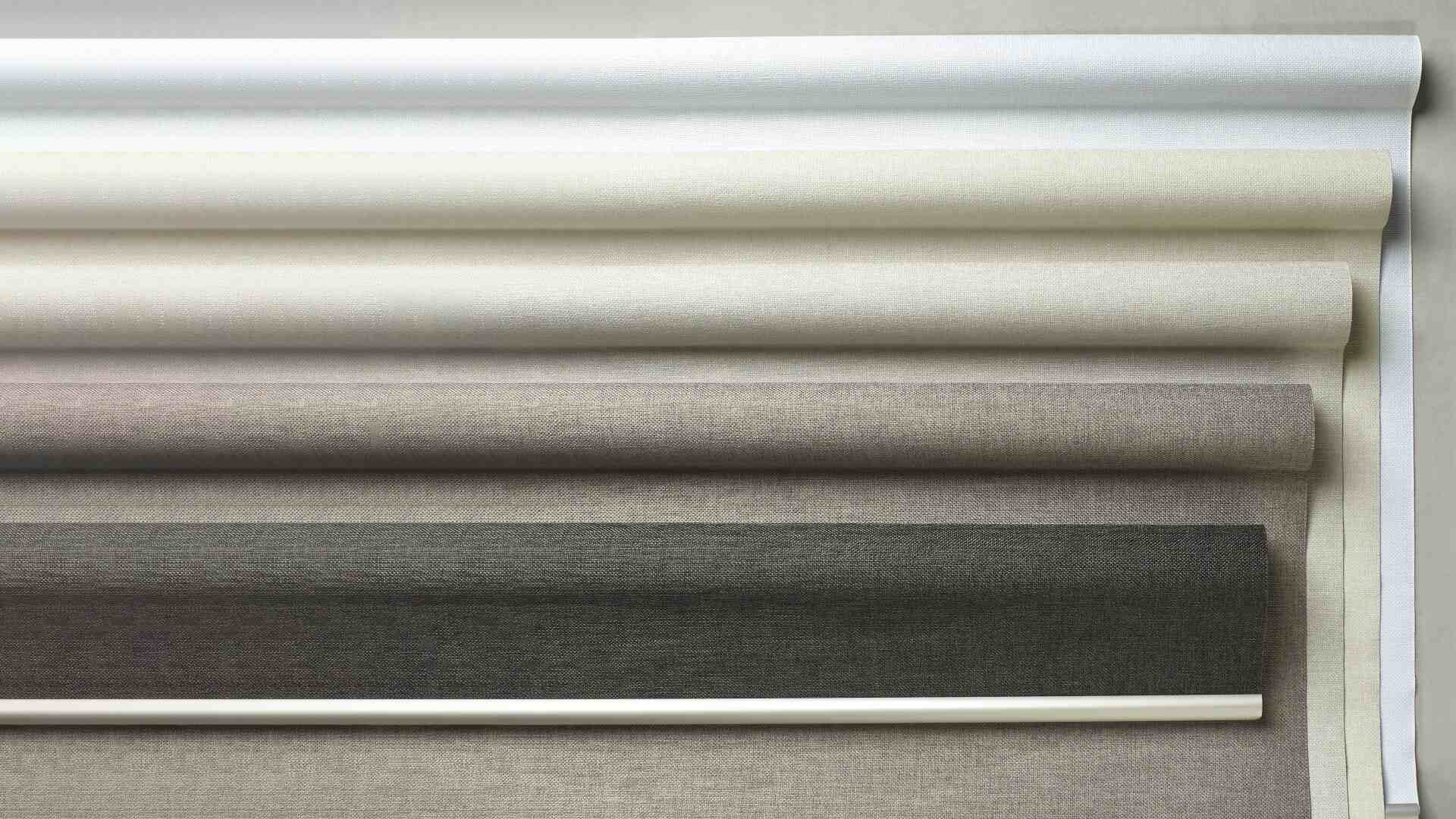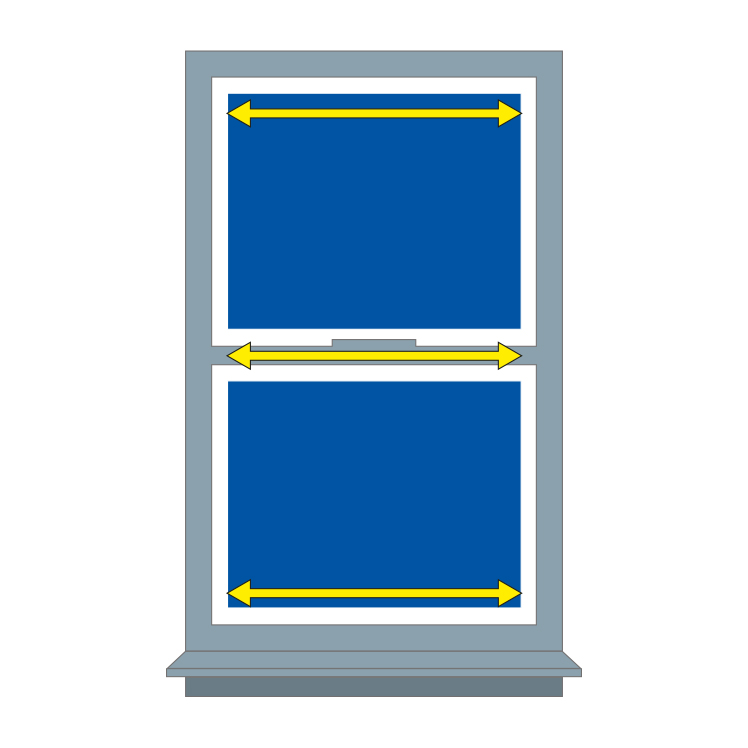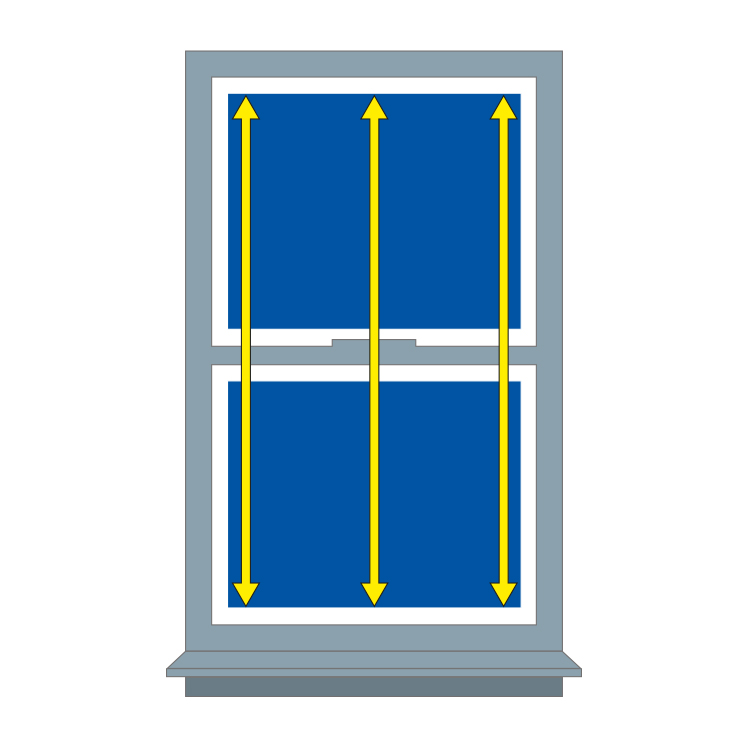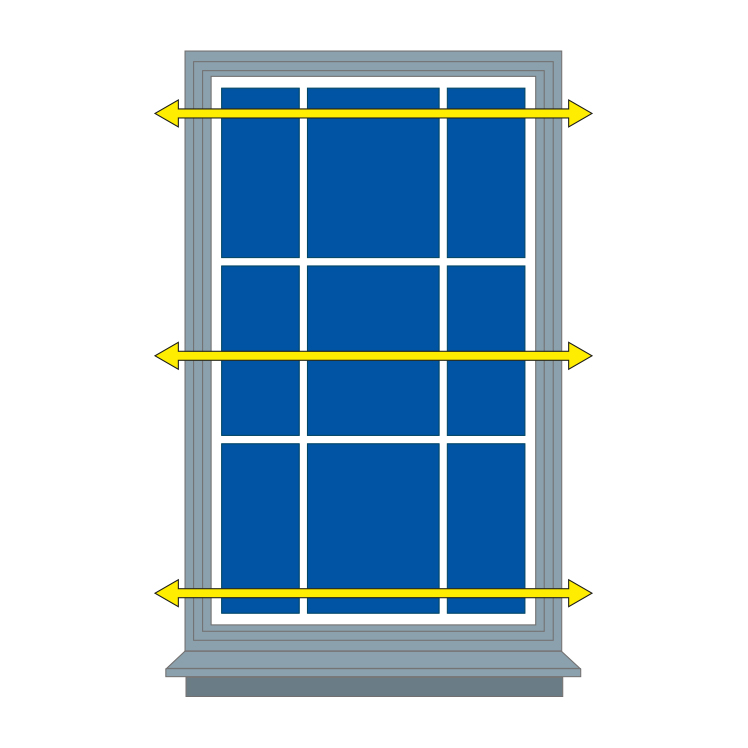 | ||
| Your browser is not supported. | ||
|
Please browse our site using any of the following options:
| ||
Everything You Need To Know About Installing Roller Blinds

Roller blinds are a popular and practical window furnishing choice, and at Spotlight you can discover a huge range of roller blinds in a variety of colours, textures, sizes and finishes to suit any decor theme. A stylish option for both modern and classically styled homes, you can choose from sheer roller blinds, blockout roller blinds and dual roller blinds, which combine blockout and sheer rollers on one bracket. Once you've decided on the perfect roller blinds for you and your family, just one question remains - how are you going to install them?
Thankfully, installing roller blinds yourself is easy - and with a few professional tips and tricks, you'll be able to show off your blinds to their full potential, ensuring they sit neatly on your window while offering the maximum benefits to your home. Spotlight's comprehensive guide to installing roller blinds covers everything you need to know including required equipment, mount types, answers to FAQs and more. Read on to become a DIY blind installation expert in no time!
Quick Links:
- Getting Started: What Do I Need To Install Roller Blinds?
- How To Measure For Roller Blinds
- How To Install Roller Blinds: Video Tutorial
- Step By Step Installation Guide
- Level Up: How To Cut Roller Blinds To Size
- Roller Blinds Installation FAQs
- Discover Stylish & Practical Window Furnishings At Spotlight
Getting Started: What Do I Need To Install Roller Blinds?
If you've purchased new roller blinds from Spotlight, you will find the necessary screws, brackets, bracket covers, installation instructions and other hardware included with your blinds. You will also need a few other basic pieces of equipment to complete your installation, including:
- Measuring tape: A metal measuring tape is always preferable for these kinds of DIY jobs, as fabric tapes can be prone to stretching and are more difficult to keep level.
- Pencil: Choose a sharp HB or 2B grey lead pencil for marking the roller blind bracket positions.
- Electric Drill: The powerful nature of an electric drill is recommended for easily drilling holes for screws, as well as strongly securing them in place.
- Step Ladder: A step ladder is essential for safely reaching the tops of your window architraves for measuring, marking, attaching brackets and popping the blinds in place.
- Screwdriver (Phillips Head): If you're not using a drill attachment to screw the brackets into your window frame, a screwdriver is essential.
- Spirit Level: While not absolutely essential, using a spirit level provides assurance that your brackets will be perfectly aligned and level.
If you're planning on cutting your roller blinds down to a new width, you will also need:
- Hacksaw to cut the metal tube and bottom rail.
- File and sandpaper to remove any rough edges from the metal tube and rail.
- Sharp fabric scissors or dressmaking scissors to cut the blind fabric. If you're worried about being able to cut in a straight line, you can also use a stanley knife and metal ruler to ensure a clean and accurate cut. Just make sure you use a fresh blade!
Hot Tip: If you're using a Stanley knife to cut your blind fabric, a cutting mat or quilting mat is ideal to protect your table or workbench, and provides a smooth yet resistant surface for cutting.
How To Measure For Roller Blinds
The first thing you'll need to determine is how you want your roller blinds to sit on your window - do you want them on the inside or the outside of the window frame? When blinds are installed on the inside of the architrave or window framing, this is referred to as recess fit. Installation of blinds on or above the architraves is also known as face fit.
Measuring for Recess Fit Roller Blinds (Inside Mount)
- Measure the width at 3 points across to check the window is square. If uneven, the narrowest of the 3 measurements is to be used.
- Measure the drop (or height) at 3 points to check your window is square. If uneven, the shortest measurement is to be used.


Recess Fit Allowance: In order for your recessed blinds to correctly fit inside your window, additional allowances or deductions must be applied. For roller blinds, subtract 5 mm from the narrowest window width measurement to ensure a good fit and ease of operation.
Measuring For Face Fit Roller Blinds (Outside Mount)
- Measure the width of the window from one side of the architrave to the other, outer side of the architrave.
- Measure the drop (height) from the top of the architrave edge to the bottom of the sill or frame.


Tips For Measuring Your Windows
- Record all your measurements and window details in one spot for convenient reference.
- Record all measurements in millimetres (mm). This will ensure the accuracy of selecting and installing the right-sized blind for your windows.
- If you're unsure about your preferred mounting type before you purchase your blinds, measure for both recess and face fix before heading to your nearest Spotlight store.
- Keep in mind that the widths of Spotlight's roller blinds are inclusive of the brackets. For example, a 150 cm width roller blind will have a fabric measurement of around 147 cm.
How To Install Roller Blinds: Video Tutorial
If you're a visual learner, our simple-to-follow video tutorial provides a great snapshot of the roller blinds installation process from start to finish. Check it out below!
Step By Step Installation Guide
Now that you've discovered how to measure your roller blinds, viewed our video tutorial and have all the essential equipment to hand, you can review all the installation steps:
- Determine your mount type and measure your windows.
- Attach the brackets to the window frame. Use a grey lead pencil to mark a spot for two brackets - one on each side of the window - and make sure they're at the same height and depth on the window frame. Using a spirit level will make sure the brackets are in line with each other. Roller blind brackets are designed to be universal and can be installed in face-fix or top-fix (recessed) orientations.
- Use a drill with an impact driver attachment so the brackets are firmly attached. If you don't have this attachment, drill the holes and then secure the brackets with the provided screws using a screwdriver.
Note: Use the supplied masonry plugs if drilling into brick or concrete walls. - If you are cutting your roller blinds to size, now's the time! If no cutting is required, proceed to step 5.
- Insert the ball chain system and end plug into either end of the roller blind tube.
- You're ready to pop the roller blind into the brackets! All you have to do is lift the blind and then snap them in place. Keep the blind rolled up for ease of installation.
- Finally, secure the cord to the window frame so it stays in one place, and to ensure the safety of any small children that may be in the home. Use a screwdriver to attach the small cord bracket. Don't use stick-on attachments - they're not as strong and could present a danger if the cord bracket comes loose.
That's it! You can now congratulate yourself on a job well done.
Level Up: How To Cut Roller Blinds To Size
While it may sound complicated, cutting your roller blinds to a new width is straightforward with a little planning, careful measuring and the right equipment. Roller blinds are essentially length of fabric rolled onto the top tube, and finished with a bottom rail that easily slides off so you can make your adjustments. Because the operating mechanisms are separate from the tube, roller blinds can be cut back to any width you need.
- Determine the desired bracket position for your roller blind and install them in position.
- Measure the internal distance between each bracket, and add 20 mm (2 cm) allowance for the ball chain system and end plug. This will be the new total length of your roller blind top tube.
- Unfurl the roller blind onto a flat surface, and slide away the fabric from the top tube. Remove the end caps from the bottom rail and again, slide the fabric off the rail.
Top tip: There's no need to completely remove the tube and rail - simply slide the fabric away far enough to allow for easy trimming of the rail, tube and fabric. - Mark the tube and rail at the length determined in step (2). Use a sharp pencil to make your marks. Alternatively, use a piece of masking tape wrapped around the tubes - this handily doubles up as an easily visible cutting line and will help ensure a level cut.
- Use your hacksaw to cut the bottom rail and top tube, and file away any sharp edges. Buff with sandpaper to ensure a smooth finish.
- Now it's time to measure up the roller blind fabric! Deduct 6 mm from the determined top tube length to provide a fabric roll up tolerance. Subtract this new measurement from the existing fabric width to work out how much fabric needs to be cut away. Measure this amount in from one side of the blind fabric, marking lightly with your pencil at regular intervals.
- Using fabric scissors or a stanley knife and steel ruler, carefully cut the roller blind fabric. If using a knife, make sure you protect your surface with a cutting mat.
- Slide the fabric back into position along the upper tube and bottom rail, and replace the bottom rail end caps.
- Done! Your roller blind is now ready to be installed onto your brackets.
If you're not confident about venturing into cutting roller blinds yourself, Australian customers can enjoy the convenience of Spotlight's Cut to Size Blinds Service, either online or at selected stores. Available for a select range of roller blinds and venetian blinds, it's as simple as providing your measurements and for a small fee per blind, your roller blinds will be professionally cut to size for you!
Roller Blinds Installation FAQs
Are Roller Blinds Safe For Kids?
Roller blinds when correctly installed are safe for any home with small children. As per the mandatory Australian requirements for corded internal window coverings, a loose cord must not form a loop 220 mm or longer, at or less than 1600 mm above floor level. This means that securely installing the cord bracket at the correct height is an essential step for your family's safety.
Should I Mount Roller Blinds Inside or Outside The Window Frame?
Choosing recess or face fix is a personal choice that will impact both the aesthetics of your new roller blinds and the functional benefits they provide. If you choose recess fitting for your roller blinds, it's also important to make sure that the installed blind will not interfere with any existing opening mechanisms or locks.
Pros | Cons | Best Suited To | |
Recess Fit | Neat streamlined finish means blinds will sit flush with the window architrave. | The bracket allowance will result in light seepage on either side of the blind. | Sheer roller blinds and windows where bracket/blind projection may interfere with furniture or usability of spaces. |
Face Fit | Installed roller will cover the full width of recess/opening, preventing light seepage from the sides of the blind. | The projection of the brackets and blind will extend past the window architrave, and could interfere with furniture or functionality of spaces. | Blockout and dual roller blinds, and windows where more coverage of the architrave is desired. |
Over Roll Vs Under Roll: What's The Difference?
- Forward roll or over roll is where the fabric sits facing outwards from your window with the upper tube hidden behind the fabric.
- Under roll or backward roll is where the fabric sits closer to the window architrave and the upper tube remains visible at the top of the blind.
The default roll style of fabric on Spotlight's roller blinds is forward roll. Backwards roll can be selected where you wish the fabric to sit closer to the window, and is best suited to roller blinds where the fabric is reversible (i.e. the same on both sides). Keep in mind that sunout blinds sometimes feature a separate blockout coating on the reverse - meaning that the white backing will be visible if under-roll is your preferred option.
Can I Change The Chain Control Side Of My Roller Blinds?
Changing the chain control side of your roller blind is easy, as the chain ball system and end plug can be inserted into either end of the roller tube. Simply choose the mounting side that best suits your window and room space, and place the hardware accordingly.
Single Roller Blinds Vs Dual Roller Blinds Installation
The only difference between installing dual or "day/night" roller blinds is the type of bracket used to hang the blinds. Dual roller blind brackets are larger in size, and will project the blinds further out from the window. This style of roller blind is best installed with a face fix mounting style, as some window architraves may not be deep enough to accommodate dual roller blind brackets. If you wish to combine a sheer roller blind and a blockout roller blind on the one window - but are concerned about how far the blinds will protrude - consider installing a sheer roller on the inside of the frame (recess fit) and the blockout blind on the outside of the architrave (face fit).
How To Adjust Roller Blind Chain Length
If you need to adjust the chain length to comply with safety standards, follow these easy steps for a quick and simple chain length adjustment:
- Completely raise your installed roller blind and mark the 3rd ball down from the back of the chain mechanism.
- Roll the blind down to the lowest desired level. The section of chain between the top of the roller and the marked chain section is the maximum amount that can be cut to maintain chain operation. If the mark on your chain is not visible (i.e. your window has a short drop) the chain cannot be shortened.
- Use pliers to cut away the desired length of chain, and use the provided chain joiner to reconnect the two ends.
Hot Tip: If you wish your roller blind to consistently lower to the same height, but don't need to cut the chain, simply clip on a chain stopper!
Discover Stylish & Practical Window Furnishings At Spotlight
Spotlight has a huge range of options for covering your windows, including sheer curtains, blockout curtains, venetian blinds, outdoor blinds & shades and more! With a massive variety of colours, styles and functions available across our selection of curtains and blinds, you're sure to find the perfect option for every window in your home. Pop into your local store where our friendly team are always happy to assist with all your DIY queries, or shop online where you can enjoy the convenience of having your curtains and blinds home delivered!
If you're still weighing up the best options for dressing your windows or want to explore more DIY tips and tricks, be sure to check out our informative buying guides for measuring your windows, how to hang curtains and what types of curtains & blinds are best for different rooms. You can also explore Spotlight's comprehensive Made to Measure service where we make it simple to create the ideal custom window furnishings for your home. Book your free measure and quote online or by calling 1300 662 742 today!




